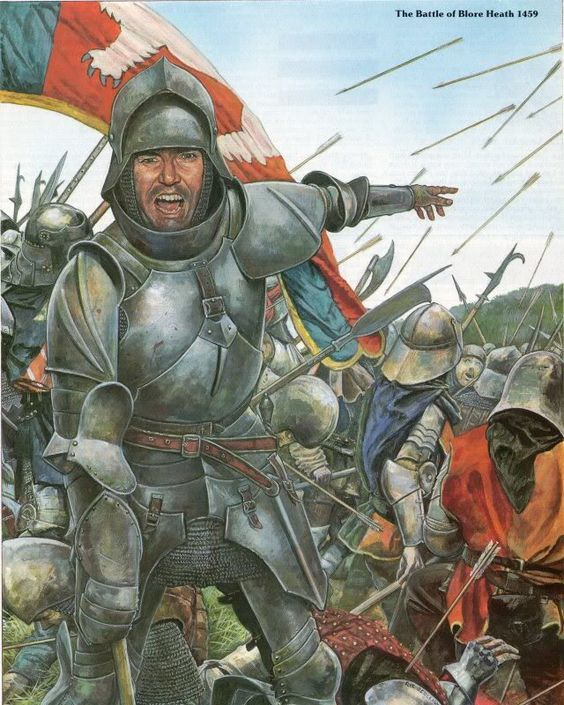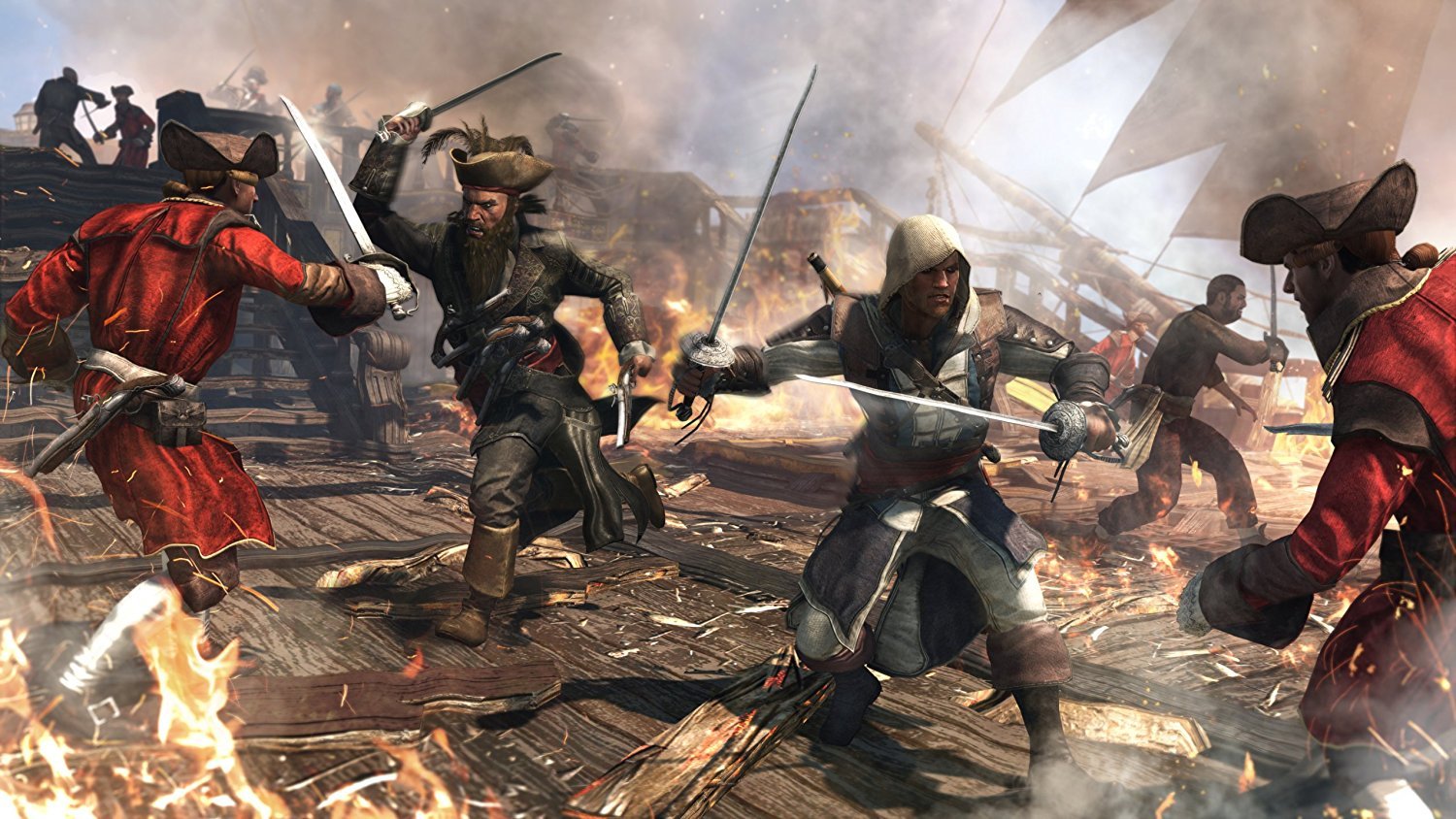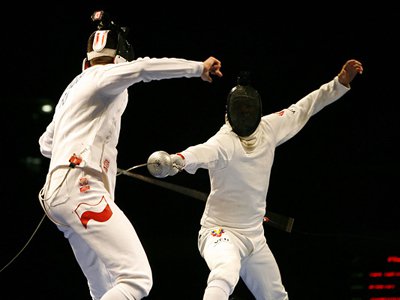think through
The confrontation of the French and Italian fencing schools
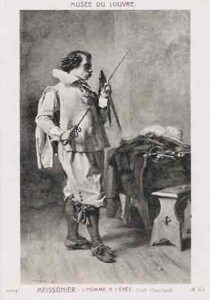 Starting from the middle of the XVII century, when the French shortened their epee, fencing with stabbing weapons began to progress rapidly in a variety of techniques, dexterity and speed of their application. From that moment, a sharp divergence of the French school (more progressive) and Italian (more conservative) begins. These discrepancies reached their peak by the end of the 19th century.
Starting from the middle of the XVII century, when the French shortened their epee, fencing with stabbing weapons began to progress rapidly in a variety of techniques, dexterity and speed of their application. From that moment, a sharp divergence of the French school (more progressive) and Italian (more conservative) begins. These discrepancies reached their peak by the end of the 19th century.
In France, from the second half of the 18th century, fencing has made rapid significant progress, clearly ahead of Italy. In 1736, the Frenchman Girard introduced the 8th and last defense, almost two centuries later than the 7th. In 1755, in the French Encyclopedia, the article “fencing” first talked about the need to introduce a fencing mask to prevent accidents. But 10 years passed before fencing masks were finally introduced. Continue reading
HYGIENIC REQUIREMENTS FOR PLACES IN THE FENCING
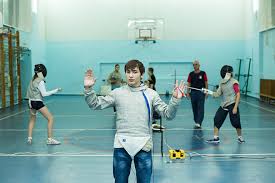 Indoor facilities for fencing should primarily have sufficient floor space, cubic capacity, good ventilation and lighting. When calculating the cubic capacity, it is necessary to take into account that the pulmonary ventilation of fighters during an individual lesson and free-style fighting increases to 14.5 – 23.0 liters per minute, and the recovery period lasts for trained fencers for about 10 minutes. In Jovičkop, pulmonary ventilation remains elevated for longer. Oxygen absorption, depending on the intensity of the lesson, increases to 480.0–856.0 cm³ in 1 min. Therefore, the cubic capacity of the room per student should be considered not less than 30 m³. Ventilation devices must provide a 3-fold change in air flow, i.e. 80 – 90 m³ of air per person per hour. Continue reading
Indoor facilities for fencing should primarily have sufficient floor space, cubic capacity, good ventilation and lighting. When calculating the cubic capacity, it is necessary to take into account that the pulmonary ventilation of fighters during an individual lesson and free-style fighting increases to 14.5 – 23.0 liters per minute, and the recovery period lasts for trained fencers for about 10 minutes. In Jovičkop, pulmonary ventilation remains elevated for longer. Oxygen absorption, depending on the intensity of the lesson, increases to 480.0–856.0 cm³ in 1 min. Therefore, the cubic capacity of the room per student should be considered not less than 30 m³. Ventilation devices must provide a 3-fold change in air flow, i.e. 80 – 90 m³ of air per person per hour. Continue reading
BASIC PROVISIONS AND MOVEMENT
(Basics of fencing movement technique)
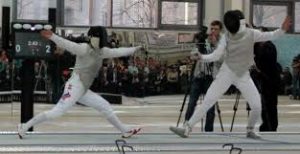 Position “at attention” – statutory stoic, fencing weapon in the right or left hand.
Position “at attention” – statutory stoic, fencing weapon in the right or left hand.
The starting position is the position from which the transition to the fencing stand is made and in which the fighters give a greeting.
Salutation (salute) – movement with an armed hand to the opponent and the judges in greeting.
Fencing stand – the most appropriate position adopted by a fighter (or teacher) for combat or training activities. The fencing stand can vary depending on various conditions:
Common Stand – Used for training sessions.
Individually modified stance – depends on the style of combat or action. In hand-to-hand combat, a stance is used in accordance with the “to battle” position in a bayonet battle. Continue reading

